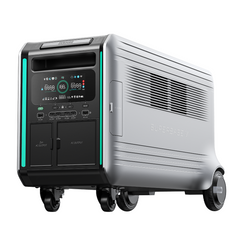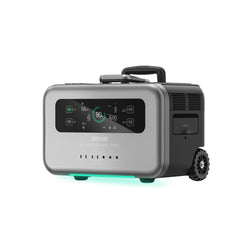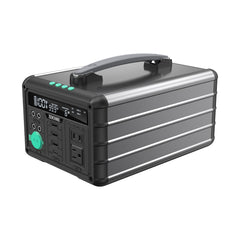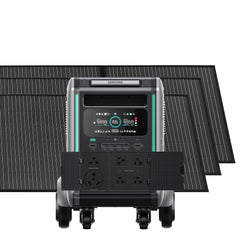Guide to the IRA Battery Storage Tax Credit in 2023
Begin in January 2023, households can receive an uncapped 30% tax credit for a battery storage installation, even if it's not paired with a solar system. Here we listed some frequently asked questions and answers to them.
Do Batteries Qualify for the Solar Tax Credit?
Yes.
On Aug. 16, 2022, the IRA adds Section 48(a)(3)(A)(ix) to create an ITC for standalone energy storage technology with a minimum capacity of 3 kWh. Energy storage technology includes batteries, but it also applies more broadly to any energy storage technology that receives, stores and delivers energy for conversion to electricity, or to most technology that thermally stores energy (excluding swimming pools, combined heat and power systems, and building structural components). Energy storage installations that are placed in service after Dec. 31, 2022, and begin construction prior to Jan. 1, 2025, are entitled to the existing ITC under Section 48(a). Energy storage installations that begin construction after Dec. 31, 2024, will be entitled to credits under the technology-neutral ITC under new Section 48E (discussed below).
And it specifically addresses the Residential Clean Energy Credit for “qualified battery storage technology expenditure”
How much can I get from the battery storage tax credit?
The signing of the Inflation Reduction Act put into immediate effect the 30% Residential Clean Energy Credit, which applies to the cost of the battery and labor including installation fee.
Can I apply for this battery tax credit if I don't have solar power system?
Yes.
Beginning on January 1, 2023, standalone battery storage (batteries that aren't connected to solar panels) will also qualify for the 30% Residential Clean Energy Credit.
So if you only purchase some batteries for energy backup, don't worry, you also can have opportunity for this apply if meet the requirements that we're going through below.
Does all battery storage qualify for the Federal Tax Credit?
To qualify for the 30% tax credit, battery storage must be:
-Installed in connection with a dwelling unit located in the United States and used as a residence by the taxpayer
-(Have) a capacity of not less than 3 kilowatt hours.
And notice that there are no maximum size, price, brand, manufacture or tax credit qualifications.
So no matter your battery are made by US or other country, you can enjoy a 30% tax credit on as large of a battery system as you’d like.
How to Claim the Federal Tax Credit?
This Residential Clean Energy Credit is a non-refundable credit that can be used to lower your federal tax liability.
So it means the tax credit is not a check that comes in the mail. Actually, it’s a credit that can be used to reduce your federal tax liability beginning in the same tax year that your battery was installed and deemed operational by a government inspector.
- Determine Eligibility – Consult with your tax advisor to determine if you are eligible for the credit and have or will have sufficient tax liability to utilize the credit.
- Complete IRS Form 5695 – This form is available onlineand is used to claim renewable energy credits. Instructions on filling out the form are available here.
- Add The Credits To Your 1040 – Once you’ve determined you are eligible for the Residential Clean Energy Credit and you have correctly completed Form 5695, you use the total credit from Form 5695 on your Form 1040 to reduce the amount of tax you owe
Summary
A vast majority of batteries installed between 2022 and 2032 will qualify for the solar tax credit expanded by the Inflation Reduction Act. The only qualifications specified by the Inflation Reduction Act are that the battery must be installed in a taxpayer's residence in the US, and the capacity of the battery storage must exceed 3 kWh.
The 30% tax credit can be used to reduce your tax liability and can be carried forward if it's not all used at once.
Even though it's available for the next 10 years, but the tax credit rate will step down, the 30% Section 25D credit lasts until Dec. 31, 2032, and then drops to 26% in 2033, and 22% in 2034. The credit is unavailable in 2035 and thereafter.
Disclaimer:
You should always consult your tax professional to determine your eligibility for tax credits given your individual situation. Zendure does not guarantee any tax credit based on our products, and any information we provide is for educational purposes only and should not be considered legal advice. It does not constitute professional tax advice or financial guidance. It should not be used as the only source of information when making purchasing decisions, investment decisions, tax decisions, or execution. Consult a tax professional to evaluate your eligibility.





